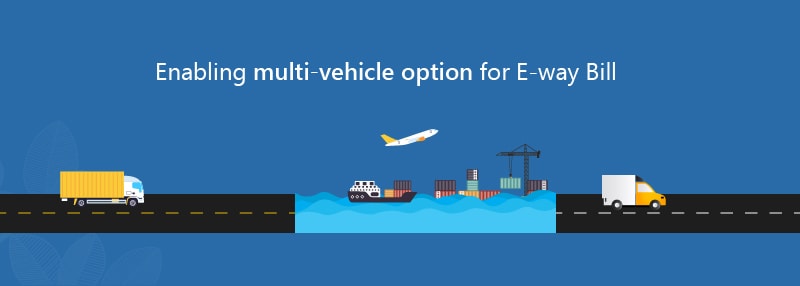In the 27th GST Council meeting, the GST Council first announced the new GST return filing process. In the 28th GST Council meeting, the new GST returns and return filing process have been approved. Within a week, a draft of the new GST return forms has been placed in the public domain, to seek feedback from businesses, CAs and other industry members. As per the latest update, the GST Council is likely to implement the new return filing process from January, ’19. It is important for businesses to know the changes proposed in the GST return filing process. In this blog, let us understand the key highlights of the new GST return filing process.
a. Simplified monthly return for persons having turnover of more than Rs. 5 Crores
Regular taxpayers having turnover of more than Rs 5 Crores can now file a simplified monthly return. The new GST return form will have 2 main tables:
- Outward supplies
- Input tax credit based on invoices uploaded by suppliers
The due date of the monthly return will be 20th of the next month. However, the new GST return filing dates will be staggered, based on businesses’ turnover, to avoid undue load on the GSTN server.
b. Quarterly return for persons having turnover up to Rs. 5 Crores
Businesses having turnover up to Rs. 5 Crores (against the earlier limit of Rs. 1.5 Crores) will have an option to file quarterly returns. Businesses opting to file quarterly returns will, however, have to pay taxes and avail input tax credit on a monthly basis. These businesses have an option to file 3 types of new GST returns:
- Sahaj: Businesses which purchase from suppliers in India and make supplies only to consumers (B2C) in India can opt to file the Sahaj return
- Sugam: Businesses which purchase from suppliers in India and make supplies only to other businesses and consumers (B2B + B2C) in India can opt to file the Sugam return
- Quarterly returns: Businesses which make imports, exports, supplies to SEZ, etc. can opt to file the quarterly return. The quarterly return will be similar to the monthly return but will be simpler and will not require certain details present in monthly returns, such as missing invoices, pending invoices, exempted supplies, etc. to be filled. However, these details will still be required to be filled by businesses filing quarterly returns, in their Annual return.
c. Simplified new GST return filing process: Upload-Lock-Pay
The new return filing process can be summarised as ‘Upload-Lock-Pay’. This means:
Upload: Invoices for supplies made will be continuously uploaded by sellers. Invoices uploaded till 10th of the next month will be available for input tax credit for the buyer.
Lock: The invoices uploaded by sellers can be continuously viewed and locked by the buyers. Here, ‘lock’ means to accept an invoice uploaded by a seller. Buyers also have options to reject the invoice, mark as pending, etc.
Pay: Taxpayers can pay the tax due on supplies after claiming input tax credit on invoices locked.
Here, a point to note is that unlike the current return filing process, only the invoices uploaded by the supplier will be considered for input tax credit for buyers. There is no provision for buyers to upload invoices.
This process will also ensure that the new GST returns are largely auto-filled based on invoices uploaded by sellers and accepted by buyers. Also, all the invoices which are not rejected or marked as pending by buyers will be considered to be accepted and locked at the time of filing of return. These steps will reduce the manual effort required to file the new GST return, especially for businesses where number of invoices is huge.
d. Profile-based return filing
Businesses will have the facility to configure their profile with details of the nature of supplies they usually make and receive. Based on this configuration, each business will be shown only the relevant fields of the return to be filled. This is again a step to customize and simplify the return filing process.
e. Facility to file return by SMS for nil return filers
Persons filing nil return (no purchase and no sale) will have the facility to file the GST return by simply sending an SMS.
f. Facility to amend return filed
Businesses will have the facility to amend invoice details and other information of a return already filed. Amendment of a return can be done by filing an ‘Amendment return’ and taxpayers can pay the additional tax payable through the amendment return. This will help them to save on the interest liability applicable if they have to wait for the next return to amend the details.
Hence, there are many changes that the GST Council has planned to ensure that the new GST return filing process is simple and easy for all businesses. However, it is important for businesses to prepare for the changes that are coming and set in place the required processes to ensure a smooth transition to the new GST return filing process. In our upcoming articles, we will help you understand each of these changes in more detail.






